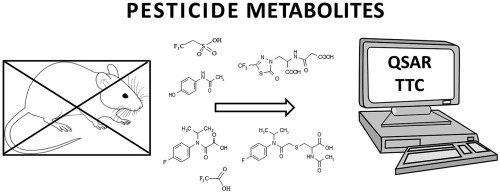当前位置:
X-MOL 学术
›
Food Chem. Toxicol.
›
论文详情
Our official English website, www.x-mol.net, welcomes your
feedback! (Note: you will need to create a separate account there.)
Alternative toxicological methods for establishing residue definitions applied for dietary risk assessment of pesticides in the European Union.
Food and Chemical Toxicology ( IF 3.9 ) Pub Date : 2020-01-10 , DOI: 10.1016/j.fct.2020.111120 Katarzyna Czaja 1 , Paweł Struciński 1 , Wojciech Korcz 1 , Maria Minorczyk 1 , Agnieszka Hernik 1 , Bożena Wiadrowska 1
Food and Chemical Toxicology ( IF 3.9 ) Pub Date : 2020-01-10 , DOI: 10.1016/j.fct.2020.111120 Katarzyna Czaja 1 , Paweł Struciński 1 , Wojciech Korcz 1 , Maria Minorczyk 1 , Agnieszka Hernik 1 , Bożena Wiadrowska 1
Affiliation

|
Consumers are constantly exposed to trace levels of residues present in food commodities, arising from the use of pesticides. For this reason, assessing the risk caused by pesticide residues present in food requires not only identification and toxicological properties assessment of the active substance, but also of its metabolites, isomers, and degradates. This requires the use of many laboratory animals. On the other hand, currently there is an emphasis on minimizing the use of animals in toxicological research. This review article presents current activities of the European Food Safety Authority (EFSA) and the European Commission's Joint Research Centre (JRC) aiming to replace at least a part of toxicological tests on substances of unknown toxicity with the alternative methods. Quantitative Structure-Activity Relationship (QSAR) and Threshold of Toxicological Concern (TTC) can be used for this purpose in procedure of establishing residue definitions applied for dietary risk assessment.
中文翻译:

建立残留定义的替代毒理学方法适用于欧盟的农药饮食风险评估。
消费者不断暴露于使用农药而引起的食品中微量残留物。因此,评估食物中农药残留的风险不仅需要对活性物质进行鉴定和毒理学评估,还需要对其代谢产物,异构体和降解物进行鉴定。这需要使用许多实验动物。另一方面,当前着重于在毒理学研究中尽量减少使用动物。这篇综述文章介绍了欧洲食品安全局(EFSA)和欧盟委员会联合研究中心(JRC)当前的活动,旨在用替代方法代替对毒性未知的物质进行毒理学测试的至少一部分。
更新日期:2020-01-11
中文翻译:

建立残留定义的替代毒理学方法适用于欧盟的农药饮食风险评估。
消费者不断暴露于使用农药而引起的食品中微量残留物。因此,评估食物中农药残留的风险不仅需要对活性物质进行鉴定和毒理学评估,还需要对其代谢产物,异构体和降解物进行鉴定。这需要使用许多实验动物。另一方面,当前着重于在毒理学研究中尽量减少使用动物。这篇综述文章介绍了欧洲食品安全局(EFSA)和欧盟委员会联合研究中心(JRC)当前的活动,旨在用替代方法代替对毒性未知的物质进行毒理学测试的至少一部分。











































 京公网安备 11010802027423号
京公网安备 11010802027423号